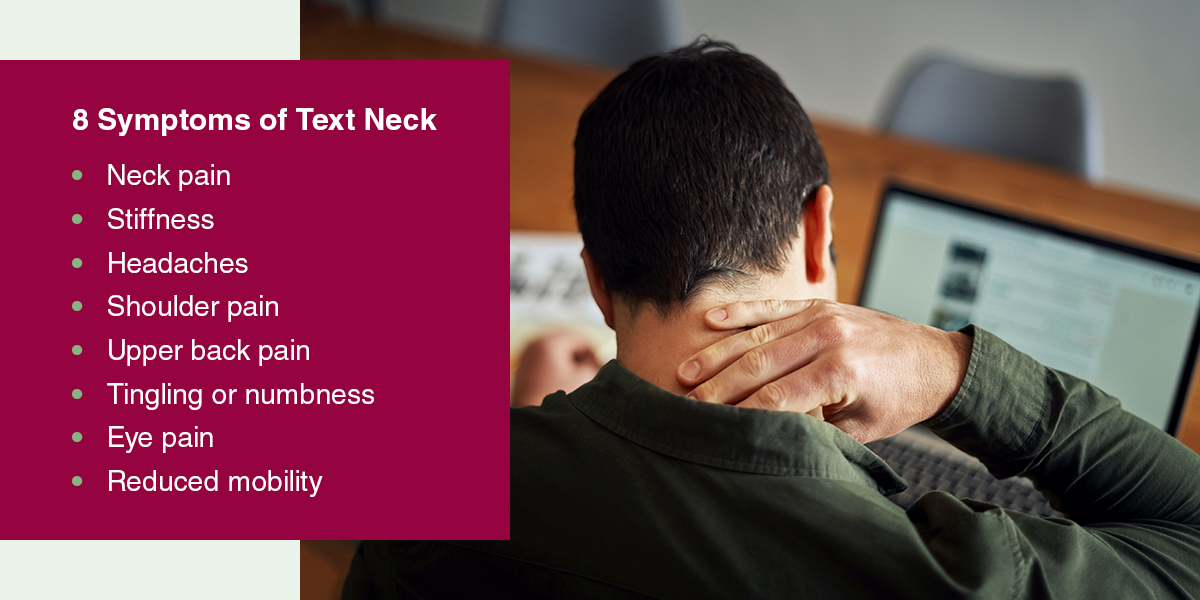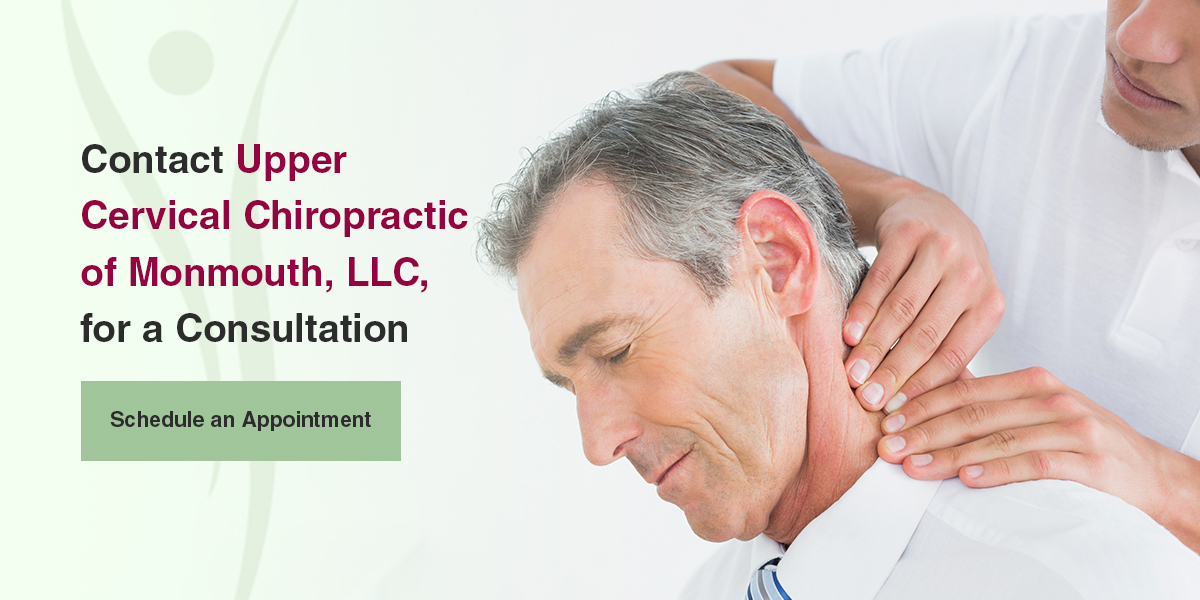Text Neck 101: Symptoms and Treatment
Text Neck 101: Symptoms and Treatment

Text neck can be painful and debilitating. The condition is caused by excessive use of electronic devices, leading to symptoms like neck and shoulder pain, stiffness and headaches. These symptoms can lead to a chronic condition and result in reduced mobility. Fortunately, addressing text neck early can prevent complications and help you get relief.
Table of Contents
What Is Text Neck?
Text neck is caused by excessive use of electronic devices such as smartphones, tablets and laptops. When we use these devices for extended periods of time, we tend to hold our neck and head in forward and downward positions, which puts strain on the neck and spine. Over time, this can cause pain, stiffness and even damage to the cervical spine.
The terms “text neck syndrome” and “tech neck” were coined to describe the posture people assume when looking down at their electronic devices for prolonged periods. The more time you spend looking down at your devices, the more strain you put on your neck and spine.
To prevent text neck, being mindful of your posture when using electronic devices is essential. Hold your devices at eye level and take frequent breaks to stretch and move your neck and shoulders. You can also try exercises to strengthen your neck and upper back muscles to help support good posture.
8 Symptoms of Text Neck

The symptoms of text neck syndrome are typically related to the neck and upper back. These may include:
- Neck pain: Most people with text neck syndrome experience a dull ache or a sharp pain in the neck. The pain might happen in one specific area and feel intense. It’s also possible to have general achiness and soreness over a more extended region, such as the base of the neck to the shoulders.
- Stiffness: The neck or shoulders may feel tight or difficult to move, particularly after prolonged use of electronic devices. This might lead to decreased range of motion.
- Headaches: Text neck can cause tension headaches that may be felt in the temples, forehead or back of the head. Headaches might appear intermittently or persist for long periods. Muscles at the back of the neck can also spasm or become painful.
- Shoulder pain: The muscles in the shoulders may become tight or painful as a result of compensating for poor posture. The sensation can be sharp or nagging and stretch into the back muscles.
- Upper back pain: The muscles in the upper back may become strained or sore due to the increased load placed on them.
- Tingling or numbness: In severe cases, text neck can compress the nerves in the neck and cause tingling or numbness in the arms or hands.
- Eye pain: Excessive time spent looking at screens, regardless of your posture, can also increase your risk of eyestrain and discomfort.
- Reduced mobility: The above symptoms, particularly pain in the upper back, neck and shoulders, can all lead to tightness and reduced mobility. For instance, you might find it challenging to move these areas without experiencing pain.
Text neck symptoms often worsen when flexing the neck forward into the position that first caused the problem, such as while looking down and texting. The location of the pain can often vary from case to case. For instance, someone who constantly looks down at their phone with both hands might be susceptible to having pain evenly distributed on both sides of the back and neck. At the same time, those who use their phone with one hand may have pain in one side of the upper body.
How to Cope With Text Neck
If you are experiencing text neck symptoms, you can try the following strategies to reduce strain and pain:
Adjust Your Posture
To prevent text neck:
- Be mindful of your posture when using electronic devices.
- Keep your back straight, your shoulders relaxed and your device at eye level.
- Use a pillow or cushion to support your back if needed.
- Avoid hunching over to look down.
- Adjust the height of your devices to be more ergonomically friendly.
Using a stand for your laptop or a Bluetooth headset can reduce the time spent looking down at your device.
Massage and Stretch
Massaging the neck and upper back muscles can help reduce pain and stiffness. Use your fingers to gently massage the muscles at the base of your skull and the sides of your neck. Apply gentle pressure and use circular motions to help release tension and improve blood flow. Shoulder rolls can help as well. Sit up straight and slowly roll your shoulders backward in a circular motion. Repeat for several repetitions and then switch directions and roll your shoulders forward.
Remember to be gentle when stretching and massaging your neck and upper back and don’t push yourself beyond your limits. If you experience any pain or discomfort, stop immediately and consult a health care professional.
Take Breaks
Taking frequent breaks from using electronic devices can help reduce the amount of time you spend in a forward-leaning posture. Set a timer to remind yourself to take a break every 20-30 minutes and stretch your neck and upper back. You can also use the time to take a short walk or do a quick exercise. As long as you’re giving your body a break and adjusting your posture, you can help prevent tech neck complications.
Lifestyle Changes
Making changes to your lifestyle, such as exercising regularly and getting enough sleep, can help improve your overall health and reduce the risk of developing text neck or complications.
See a Healthcare Professional
If your symptoms persist or worsen, it’s a good idea to see an upper cervical chiropractor for further evaluation and treatment. Text neck can result in long-term damage to the spinal nerves and cervical discs. People can also encounter degenerative problems affecting the spinal column.
Upper cervical chiropractors can correct cervical misalignment with a gentle, effective method for the client. Professionals can also show you how to improve your posture and strengthen the neck and upper back muscles. Addressing your symptoms early can prevent further damage or health complications caused by text neck.
Contact Upper Cervical Chiropractic of Monmouth, LLC for a Consultation
You can cope with text neck by making simple changes to your daily routine that improve your overall posture and health. If you experience symptoms that persist or worsen, it’s crucial to talk to a health care professional. Upper Cervical Chiropractic of Monmouth, LLC offers treatment for neck pain by taking a “full spine” approach to better correct cervical misalignment. Our team of experts can treat text neck and help relieve neck pain with a precise, gentle adjustment.
Fill out our online form for a complimentary consultation.





